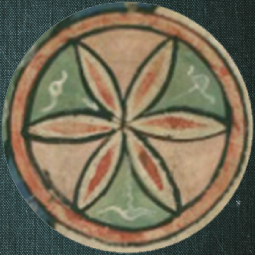A Brief History
"The piyut is a textual creation, poetry that is intended to be sung, and can hold within it all the possible dimensions of conversation directed to the Divine or speaking of Him. Hence the piyut is also a prayer expressing the entire range of emotions humans can feel toward the Divine: praise, adoration, joy, sorrow, lamentation and crying, longing and yearning." (Haviva Pedaya)
From its beginnings, the piyut is the Hebrew sacred poem that has accompanied the Sabbath and the holiday prayers of the Jewish calendar cycle. Piyutim were first written in the Land of Israel in the 3-4 century AD, and to a large extent were a continuation of the Biblical song of prayer, especially the poetry of the Book of Psalms.
After the destruction of the Temple, the set prayer of the Jewish prayer book replaced the sacrifices that were offered in the Temple (the service of the heart) and the piyut is really the song that seeks to prepare one for the set prayer, and to bring the worshiper to an emotional, intentional and open state. The paytanim (composers of the piyutim), therefore, seek to deepen and renew the individual and public prayer experience.
For over a thousand years, the creation of piyutim, much like Hebrew poetry in general during this period, was focused on the prayer of the synagogue. The style and form varied from period to period and from place to place, but the main thing was that the piyut was always created as a contemporary work seeking to prepare, expand, clarify and deepen the set prayers. Thus, many thousands of piyutim were written in the area of the Land of Israel, Iraq of today, Italy and France, and also later in Spain and North Africa, Yemen and the Jewish world in general.
"...the piyut will adorn the standing of prayer, the life cycle and the year, wherever the heart's desire overpowers the intellect, when words and melody are not enough, and when that which is set surrenders its place for renewal ...." (Avigdor Shanan)
From the synagogue, the piyut spread to take its place in all the spaces of Jewish ritual and culture: the Sabbath table, the Passover Seder, holidays and festivals, life ceremonies, gatherings of friends, Shirat HaBakashot, and more. In all these places, the piyut seeks to uplift the moment, to connect worlds and humans to what is beyond them, and to deepen the dimension of prayer in their lives.
The piyut attempts to express that which is impossible to express in words – our conversation with God. It must have a melody – many melodies – for they bring something from an abstract language that goes beyond words. Thus, the textual dimension is joined by music in all its glory, and from generation to generation a multi-colored, multi-faceted mosaic is created. There are piyutim that have merited the composition of hundreds of melodies, including those that continue to be written to this day.
“... The piyut is the chain of heritage of Jewish culture in all its infrastructure and its layers, the song of the heart and longing for all the good of the people of Israel in its tribes ..." (Ephraim Hazan)

 Sign in with Google
Sign in with Google
 Sign in with Facebook
Sign in with Facebook

